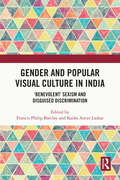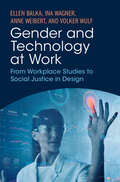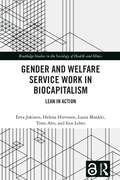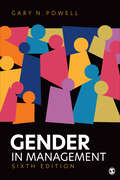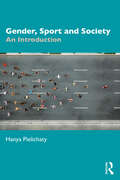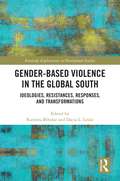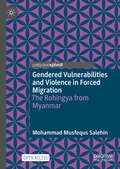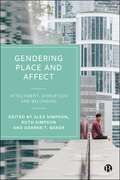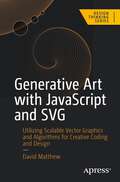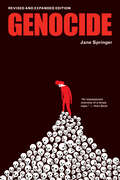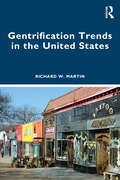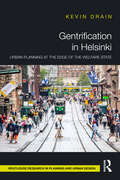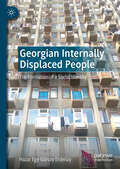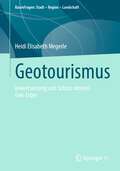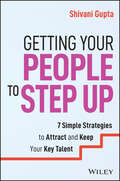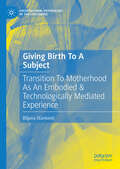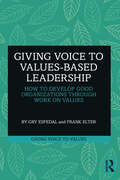- Table View
- List View
Gender and Popular Visual Culture in India: ‘Benevolent’ Sexism and Disguised Discrimination
by Francis Philip Barclay Kaifia Ancer LaskarPerhaps, male-mindedness seems to have adapted to changing-contemporary circumstances to become more covert and conspiratorial. Sexist suggestions—through objectification and substantiated subordination—for instance, may have been explicit in Indian media a decade earlier. But in the contemporary times of online social media and vociferous feminism, such openness of unfairness against women in the media will, more often than not, be met with strife and unpalatable backlash—fearing which blatant prejudice is prudently steered clear of. It is, hence, understandable that patriarchy, to sustain itself as a culture, has adapted to become more benevolent in an increasingly hostile environment. To identify such sly and stealthy sexism embedded in media content, one may need a reconfigured grasp of contemporary feminist issues and an altered nuance for isolation and identification of discriminatory depictions. This book exposes redefined and hidden sexism that predominates the popular visual culture of India—particularly investigating mass and new media representations that are a prime part of and have a domineering effect on the ensemble of popular visual culture—and characterises contemporary feminist movements. It binds a collection of contemporary Indian case studies of sexism and feminism encompassing communication media such as print, cinema, television, Web series and social media. There is a lack of book titles that study media sexism in the present times, and the proposed book aims to explore an unexplored area that is of social and scholarly importance. This book highlights the duality of media platforms: while media is a critical tool associated with fourth-wave feminism, they still remain to be a deterrent to the development of women engendering inherent and age-old patriarchal notions. This book will be an eye-opener to the general readers about benevolent sexism and train them to identify sexism hidden in seemingly pro-women media representations.
Gender and Technology at Work: From Workplace Studies to Social Justice in Design
by Ellen Balka Ina Wagner Anne Weibert Volker WulfThis book brings together the vast research literature about gender and technology to help designers understand what a gender perspective and a focus on intersectionality can contribute to designing information technology systems and artifacts, and to assist organizations as they work to develop work cultures that are supportive of women and marginalized genders and people. Drawing on empirical and analytical studies of women's work and technology in many parts of the world, the book addresses how to make invisible aspects of work visible; how to recognize women's skills without falling into the trap of gender stereotyping; how to engage in improving working conditions; and how to defend care of life situations and needs against a managerial logic. It addresses challenges for design, including many overlooked and undervalued aspects, such as the complexities involved in human–machine interactions, as well as the need to create safe spaces for research subjects.
Gender and Welfare Service Work in Biocapitalism: Lean in Action
by Helena Hirvonen Eeva Jokinen Laura Mankki Timo Aho Iiris LehtoThis book explores how Lean – a global management doctrine – operates and is adopted in the real, corporeal, collective, and affective environments of health and social care services. During Lean implementation processes, knowledges, affects, skills, and materialities come together in manifold, complex ways. Based on ethnographic fieldwork, interviews, and observation, and with empirical and theoretical rigour, the book provides an answer to the question of what happens to care work when processes become ‘Leaned’. As in many other fields, the predominantly female health and social care sectors suffer from devaluation in terms of wages and working conditions. The book explores how Lean management is ultimately lived in this gendered context of work and labour. Moreover, the book situates Lean and related management doctrines in the current mutation of capitalism – that is, biocapitalism – in which bios, life itself, becomes the core of value production. The book adds to the corpus of work, organisation, and management studies on Lean that have rarely focused on gender, affect, or sociomateriality. It provides scholars in Social Science, Management, and Gender Studies with a fresh outlook and a cross-disciplinary take on Lean management.
Gender in Management
by Gary N. PowellIn the Sixth Edition of Gender in Management, author Gary N. Powell provides a comprehensive survey and review of the literature on sex, gender, and organizations. With the title change from Women and Men in Management to Gender in Management, the new edition adopts a more inclusive lens that acknowledges the diverse identities and experiences within the gender spectrum. Fully updated sections on intersectionality, public events such as COVID-19 and the Black Lives Matter movement, and the prevalence of AI in hiring decisions provide context to the evolving nature of gender in the workplace and society. Powell provides specific research-based strategies for promoting an organizational culture of nondiscrimination, diversity, and inclusion.
Gender in Management
by Gary N. PowellIn the Sixth Edition of Gender in Management, author Gary N. Powell provides a comprehensive survey and review of the literature on sex, gender, and organizations. With the title change from Women and Men in Management to Gender in Management, the new edition adopts a more inclusive lens that acknowledges the diverse identities and experiences within the gender spectrum. Fully updated sections on intersectionality, public events such as COVID-19 and the Black Lives Matter movement, and the prevalence of AI in hiring decisions provide context to the evolving nature of gender in the workplace and society. Powell provides specific research-based strategies for promoting an organizational culture of nondiscrimination, diversity, and inclusion.
Gender, Sport and Society: An Introduction
by Hanya PielichatyIntroducing the core concepts, issues and debates in the study of gender and sport, this is an accessible, engaging and thought-provoking textbook for anyone studying or interested in sport. It highlights the complexity of the gendered sporting world. Exploring inequalities in society that are reflected in sporting spaces and practices, and offering practical guidance on how to develop study skills and critical thinking, this textbook empowers readers to view the world in a different way. The book explores the social and political aspects of gender, sport and society, as well as their intersection with race/ethnicity, dis/ability, and sexualities. Introducing the basics of gender theory as applied to sport, and placing equity, diversity and inclusion at the heart of the discussion, the book explores key themes, current issues and hot topics, such as women in esports, mental health, and parenthood. The book also looks at how gender and gender stereotypes play out in the world of sport business and management. The reader is asked to co-create the textbook’s narrative by engaging with several pedagogical features, such as ‘stop and think’ and seminar activities, requesting the reader to be an active and critical participant. The compact and considered chapters will help to break down the complexity involved in this subject area. The final chapter is dedicated to study skills and practical learning advice, acting as a study guide to complement the discipline-rich chapters that come before it. This textbook is written from practitioner-educator experience ensuring the content is degree-specific, critically positioned, and most importantly, inclusive and accessible. Full of useful features in every chapter, from subject ‘insights’ to guides on further reading, media links and other sources, as well as example assignment questions, this is an indispensable textbook for all students of gender and sport, women and sport, the sporting body, sport and society, social issues in sport, inclusion in sport, and sport development, and fascinating reading for anyone with an interest in sport, gender studies or sociology more broadly.
Gender-Based Violence in the Global South: Ideologies, Resistances, Responses, and Transformations (Routledge Explorations in Development Studies)
by Dacia L. LeslieThis book amplifies the different voices and experiences of those facing gender-based violence (GBV) in the Global South. It explores the localised ways in which marginalised individuals design modes of coping with and address GBV, including cultural interpretations, and artistic and faith-based expressions.The book examines GBV triggers, prevalence, and societal impacts while referring to community, national, and regional mobilisation to deal with the phenomenon in its various manifestations, including physical, psychological, political, domestic, and public violence. It explores issues related to women’s negotiations with the patriarchal underpinnings of GBV; the role of the law and history in the perpetuation of GBV; the complementary role of culture and faith to legal protection against GBV, and access to justice for women and girls. In doing so, the book exposes understandings and expressions of GBV, as well as methodologies and indigenous initiatives to prevent it through local viable solutions. The book thus challenges the normalisation of GBV in the Global South.Providing concrete and culturally relevant suggestions for challenging ingrained models of gender understandings of violence in the Global South, this book will be of interest to academics in the fields of Development Studies, Gender Studies, Women’s Studies, Violence and Abuse Studies, Human Rights, Criminal Law, and Socio-Legal Studies.
Gendered Vulnerabilities and Violence in Forced Migration: The Rohingya from Myanmar
by Mohammad Musfequs SalehinThis open access book investigates the gendered violence and vulnerabilities experienced by Rohingya men and women, drawing on qualitative data from refugee camps in Bangladesh. It shows that in Myanmar, men suffered torture and sexual violence, while women experienced physical, mental and sexual violence, legitimized by patriarchal norms. Sexual violence was wielded as a weapon to coerce their exodus from Myanmar and to disrupt the essential facets of Rohingya femininity, motherhood, and reproductive capabilities. Structural, cultural and symbolic violence affected the Rohingya differently across gender lines. A gendered threat narrative and othering cast women as ‘ugly’ and reproductive threats while men are framed as potential threats to national security and Buddhist nationalism. In Bangladesh, gendered othering continued, with Rohingya men seen as security threats and women as vulnerable victims. This book contributes to peace and conflict studies, gender studies, and migration and refugee studies, by analysing gendered violence.
Gendering Place and Affect: Attachment, Disruption and Belonging
by Nick Rumens Rachel Morgan Katherine Johnson Melissa Tyler Patricia Lewis Christina Schwabenland Murray Lee Anna Hickey-Moody Nicholas Hill Daniel Harris Evgenniia Kuziner Nyk Robertson Troy Innocent Jessica Horne Paul McGuinness Alison Hirst Corina Sheerin Rajeshwari Chennangodu George KandathilDrawing on affect theory and the key themes of attachment, disruption and belonging, this book examines the ways in which our placed surroundings – whether urban design, border management or organisations – shape and form experiences of gender.Bringing together key debates across the fields of sociology, geography and organisation studies, the book sets out new theoretical ground to examine and consolidate shared experiences of what it means to be in or out of place.Contributors explore how our gendered selves encounter place, and critically examine the way in which experiences of gender shape meanings and attachments, as well as how place produces gendered modes of identity, inclusion and belonging. Emphasizing the intertwined dynamics of affect and being affected, the book examines the gendering of place and the placing of gender.
Generative Art with JavaScript and SVG: Utilizing Scalable Vector Graphics and Algorithms for Creative Coding and Design (Design Thinking)
by David MatthewThis book introduces you to the exciting world of generative art and creative coding through the medium of JavaScript and Scalable Vector Graphics (SVG). Using tried and trusted techniques, you’ll tackle core topics such as randomness and regularity, noise and naturalistic variance, shape and path creation, filter effects, animation, and interactivity. In the process you’ll learn SvJs, a JavaScript library that closely mirrors the SVG spec and makes scripting SVG intuitive and enjoyable. You’ll also study the craft of generative art and its creative process, along with JavaScript fundamentals, using modern ES6+ syntax. Each chapter will build upon the previous one, and those completely new to programming will be given a primer to help them find their feet. Generative Art with JavaScript and SVG will take you on a fun journey, peppered with plenty of sketches throughout, designed not only to explain, but to inspire. You Will: • Structure and randomise compositions. • Understand the different types of randomness and their probability distributions. • Create organic variance with the SvJs Noise module. • Apply SVG filter effects in a generative fashion. • Explore different approaches to animating with SVG. • Make your compositions dynamic and interactive. WHO IS IT FOR: Web developers and designers and creative coders with an interest in digital and generative art as well as artists who are interested in learning to code with JavaScript.
Genese und Rezeption der Theorie der kategorialen Bildung von Wolfgang Klafki
by Manuel HermesWolfgang Klafki ist einer der zentralen deutschen Erziehungswissenschaftler in der zweiten Hälfte des 20. Jahrhunderts. Seine 1959 publizierte Dissertation über "Das pädagogische Problem des Elementaren und die Theorie der kategorialen Bildung" etablierte ihn mit einem Schlag in der ersten Riege der Erziehungswissenschaft der jungen Bundesrepublik. Weitgehend unbekannt ist bis heute, dass und inwiefern er seine Theorie der kategorialen Bildung bereits in der erst 2013 veröffentlichten Staatsexamensarbeit von 1951 ausgearbeitet hat. Die Studie von Manuel Hermes nimmt ihren Ausgang von jener frühesten Arbeit Klafkis und zeichnet von dort aus die Genese der Theorie der kategorialen Bildung in ihrer ursprünglichen Entstehung und werkimmanenten Entwicklung von 1951 bis 2007 nach. Im Anschluss daran untersucht Hermes die erziehungswissenschaftliche und didaktische Rezeption der Theorie der kategorialen Bildung. Er legt damit ein unverzichtbares Standardwerk für jede künftige Forschung zum Thema vor.
Genocide: Revised and Expanded Edition (Groundwork Guides)
by Jane SpringerWhat is genocide? Why does it happen? What can be done to prevent it from happening again? At the end of the Second World War, with the establishment of the United Nations, the holding of the Nuremberg Trials and the adoption of the Genocide Convention, the international community assured itself that genocide would never happen again. But never again has become a meaningless phrase. This book asks why. It also asks, what is genocide? Where has it happened in the past? Who is being threatened by genocide today? And what can we do to prevent this terrible crime from recurring? Providing an overview of the history of genocide worldwide, this revised, expanded edition helps readers answer these questions. It brings them up to date with recent events—the killing of the Rohingya in Myanmar, the persecution of the Uyghurs in China, the broader recognition of the genocide of Indigenous Peoples, the resurgence of fighting in Darfur, and the wars in Ukraine and the Middle East. It examines and elucidates the debates and controversies surrounding the use of the term genocide as well as the reasons for the common response by individuals, governments and the United Nations — denial. Key Text Features annotated resources chapters definitions explanation facts further information further reading headings historical context illustrations index map sidebars table of contents timeline
Gentrification Trends in the United States
by Richard W. MartinGentrification Trends in the United States is the first book to quantify the changes that take place when a neighborhood’s income level, educational attainment, or occupational makeup outpace the city as a whole – the much-debated yet poorly understood phenomenon of gentrification. Applying a novel method to four decades of U.S. Census data, this resource for students and scholars provides a quantitative basis for the nuanced demographic trends uncovered through ethnography and other forms of qualitative research. This analysis of a rich data source characterized by a broad regional and chronological scope provides new insight into larger questions about the nature and prevalence of gentrification across the United States. Has gentrification become more common over time? Which cities have experienced the most gentrification? Is gentrification widespread, or does it tend to be concentrated in a small number of cities? Has the nature of gentrification changed over time? Ideal reading for courses in real estate, urban planning, urban economics, sociology, geography, econometrics, and GIS, this pathbreaking addition to the urban studies literature will enrich the perspective of any scholar of U.S. cities.
Gentrification in Helsinki: Urban Planning at the Edge of the Welfare State (Routledge Research in Planning and Urban Design)
by Kevin DrainThis book unravels the paradox of gentrification in Helsinki, Finland. Here, housing and welfare policies work well under certain conditions to prevent the worst outcomes of residential gentrification. Yet other forms of gentrification have proliferated in recent years, and local urban planning has gained a momentum in efforts to remake the urban landscape for business and tourism.Through a range of methods, each chapter approaches a different aspect of gentrification: the effectiveness of welfare policies against residential gentrification, the importance of retail gentrification and symbolic changes, the role of media and state-led tourism campaigns in promoting gentrification, the rise of vibrancy and sustainability as concepts driving regeneration, and the question of planning principles like participation in confronting gentrification. The reader will find a state system that supports a delicate balance in housing, but a local planning regime related to a more “generalized” gentrification. The results raise questions about the limits of the welfare state in an age of global competition.While new readers of gentrification will benefit from a deep engagement with the literature, the case of Helsinki is relevant to all students of planning, social sciences, and urban studies, as well as professionals in related fields.
Georgian Internally Displaced People: The Formation of a Social Identity
by Hazar Ege Gürsoy ErdenayThis book explores the construction of Internally Displaced Persons (IDPs) identity as a social group in Georgia, framed through Tajfel and Turner's Social Identity Theory. It examines the key factors shaping the identity of Georgian IDPs displaced by ethnic conflicts in two major migration waves (the early 1990s and 2008) from Abkhazia and South Ossetia. Divided into two parts, the study first looks at the historical context of the ethnic conflicts and the state's responses to displacement. The second part focuses on the formation of IDP identity, analyzing how external definitions by the host community have perpetuated devaluation? throughout the post-Soviet period. It also highlights the self-perceptions, characteristics and tactics that have helped transform IDP identity from a devalued label to a more positive and resilient social identity.
Geotourismus: Inwertsetzung und Schutz unseres Geo-Erbes (RaumFragen: Stadt – Region – Landschaft)
by Heidi Elisabeth MegerleGeotourismus, lange als eine Form des Nischentourismus betrachtet, hat sich zu einer nachgefragten Form des Thementourismus entwickelt. Im letzten Jahrzehnt erwies sich Geotourismus sogar als das am schnellsten wachsende Tourismussegment. Geoparks sind die wesentlichen Träger des Geotourismus. Sie sind keine zusätzliche Naturschutzkategorie, sondern eine Prädikatisierung für Gebiete, die ein herausragendes Geopotential aufweisen sowie eine Strategie zur nachhaltigen Regionalentwicklung. Ihre spezifischen Geotope und Geolandschaften (Geodiversität) nutzen sie für ein geotouristisches Standortmarketing. Über Geobildung wird Interesse für geotouristische Angebote geweckt und ein Bewusstsein für den Geotopschutz aufgebaut, der nach wie vor ein Stiefkind des Naturschutzes ist. Bereits seit dem Jahr 2000 besteht das Netzwerk der European Geoparks. In Deutschland können zusätzlich Nationale GeoParks anerkannt werden. 2015 wurde mit den UNESCO Global Geoparks eine weitere Kategorie von UNESCO Stätten – neben den Welterbestätten und den Biosphärenreservaten – ins Leben gerufen. Als Modellregionen für nachhaltige Entwicklung sollen sie aufzeigen, wie Ziele der globalen Nachhaltigkeitsagenda 2030 auf kommunaler und regionaler Ebene umgesetzt werden können.
Gesellschaftliche Dynamiken depressiver Erkrankungen bei älteren Menschen: Eine Analyse stressbezogener Effekte in europäischen Wohlfahrtsregimen (BestMasters)
by Christopher EtterDepressivität ist nicht bloß ein individuelles Thema, sondern zeichnet sich, wie auch andere Formen psychischer Leiden, durch einen nicht vernachlässigbaren Grad an sozialer Variabilität aus. Forschung zu den sozialen Determinanten psychischer Gesundheit weist folglich insbesondere darauf hin, welche Rolle die gesellschaftliche Umwelt für die Entstehung von Erkrankungen spielt und kann somit der Konzeption neuer Präventionskonzepte dienlich sein. Das vorliegende Buch beschäftigt sich mit der Depressivität von Personen über 50 Jahren in verschiedenen europäischen Wohlfahrtssystemen. Durch einen vergleichenden Ansatz mithilfe von Daten des "Survey of Health, Ageing and Retirement in Europe" (SHARE) werden regimespezifische Effektdynamiken im Hinblick auf Stressexposition, die Ausstattung mit Bewältigungsressourcen und Depressivität aufgedeckt. Hiermit soll einerseits auf die Möglichkeit wohlfahrtsstaatlicher Einflussfaktoren auf die psychische Gesundheit hingewiesen sowie auch eine Synthese von Regimetheorie und soziologischer Stressforschung vorangetrieben werden.
Gestaltungsprinzipien für den Erwerb von TPACK in der Lehrkräftebildung: Eine empirisch-explorative Längsschnittbefragung von Lehramtsstudierenden
by Danny DignaßDie voranschreitende Digitalisierung unserer Lebenswelt stellt die traditionelle Lehrkräfteausbildung in Deutschland vor die Herausforderung, sich den Veränderungen anzupassen und den steigenden Anforderungen im Umgang mit digitalen Medien gerecht zu werden. Dieses Buch konzentriert sich auf die Entwicklung und Förderung von digitalisierungsbezogenen Kompetenzen und Einstellungen sowie der unterrichtlichen Nutzungshäufigkeit digitaler Medien bei Lehramtsstudierenden. Am konkreten Beispiel der Technischen Universität Dortmund werden dabei Zusammenhänge zwischen spezifischen Gestaltungsprinzipien digitalisierungsbezogener Lehr-Lernangebote für angehende Lehrkräfte und dem TPACK-Konzept erforscht. Die Untersuchung basiert auf einer umfassenden Auswertung quantitativer und qualitativer Daten aus den Sommersemestern 2021 und 2023. Im Zentrum dieser Arbeit steht die Bereitstellung einer evidenzbasierten Orientierung für die Vorbereitung von Lehramtsstudierenden auf einen effektiven Einsatz digitaler Medien in schulischen Lehr-Lernprozessen in der Digitalität.
Gesundheitsorientierte Führungskompetenz: Trainingsmanual
by Jörg Felfe Annika KrickDieses Trainingsmanual bietet alles, was Sie für das Führungskräftetraining zur Förderung gesundheitsorientierter Führungskompetenz benötigen. Als Grundlage und Ausgangspunkt dient das Health-oriented Leadership Konzept (HoL) mit dem Fokus auf gesundheitsorientierter Selbst- und Mitarbeiterführung (SelfCare und StaffCare). Das Training selbst ist modular aufgebaut und besteht aus den folgenden 5 Bausteinen:Baustein 1 „Warm up“Baustein 2 „Grundlagen”Baustein 3 “SelfCare”Baustein 4 “StaffCare” Baustein 5 “Cool down”Somit ist das Manual mit dem klaren Anwendungsbezug bestens geeignet, das Training in der Praxis direkt umzusetzen. Im Manual werden auch die Voraussetzungen und Bedingungen für die erfolgreiche Trainingsdurchführung thematisiert. Der theoretische Hintergrund des Trainings wird anschaulich dargestellt und die Konzeption des Trainings praxisnah erläutert. Zusätzlich gibt es für jedes Modul konkrete und detaillierte Traineranweisungen und das Material für die Durchführung des Trainings.
Get It Together: Troubling Tales from the Liberal Fringe
by Jesse WattersCan the political be way too personal? What if most radical activists are trying to change their lives by changing the whole country? <p><p> When Jesse Watters set out to interview a few dozen radical activists to find out where their wild ideas came from, he discovered two things that shocked him: <p><p> First, he liked these people. <p><p> Second, their political positions were not primarily from books, teachers, or other activists. They originated in personal drama. Most of these people didn’t need legislation. They needed a therapist. <p><p> In Get It Together, the number one New York Times bestselling author and Fox News primetime host takes on Wokeism in a way no one else has. Through a series of (sometimes very) personal interviews with some of the most radical activists in the country, Watters discovers that these activists may be overlooking the most important change they need to make—within themselves. <p><p> From activists working for climate change salvation, Black supremacy, and social justice to a professional cuddler and a transwoman who identifies as a wolf, Watters shows how many well-intentioned Americans have bought into causes invented and run by people who are illogical, emotional, and ill-informed. <p><p> Through their stories, Watters uncovers common threads—childhood traumas, broken relationships, and a lack of introspection. What if the people obsessed with the end of the world are just hurting from how this one has treated them? What if that, rather than ideological disagreements, is the deeper root of our country’s political divide? <p><p> Funny, fresh, and fascinating, Get It Together is sure to spark important conversations, and to inspire us to see one another not as political opponents, but as real and broken human beings. <p> <b>New York Times Bestseller</b>
Getting Healthy in Toxic Times: An ecological doctor’s prescription for healing your body and the planet
by Doctor Jenny GoodmanHow can we protect ourselves from the pollution, chemicals, and toxins that pervade our environment? Dr. Jenny Goodman connects the health of our planet with our own well-being, addressing the questions that very few doctors ask. We’re all too aware of the traffic pollution in the air, the chemicals in our water, the toxins in the soil (and therefore our food), and the electromagnetic energy emanating from our gadgets. If we can also understand how they affect our health, not least in the worrying rises in asthma and allergies, infertility, obesity, heart disease, behavioral and neurological disorders, as well as cancer, then we can take positive steps to avoid them. With the right information, we can: Safeguard ourselves with protective measures Minimize our interactions with pollutants Ensure our bodies have the right anti-toxin nutrients Take collective action to fight for our health and that of the environment Backed by the latest scientific and medical research, Getting Healthy in Toxic Times will empower you to look after your own health—and that of the planet. Let’s put the good stuff in and take the bad stuff out!
Getting Your People to Step Up: 7 Simple Strategies to Attract and Keep Your Key Talent
by Shivani GuptaA roadmap for hiring, coaching and motivating top performers In business, your people are your most important asset. But finding, training and motivating the right people can be daunting and costly. If you want to keep your best employees — and grow your business with their support — then Getting Your People to Step Up is the book for you! Business coach Shivani Gupta reveals seven proven strategies to help you recruit top talent and ensure your employees are happier, more engaged and more productive. Getting Your People to Step Up offers a no-nonsense approach to hiring, managing and empowering your staff. You’ll learn how to coach your team and be a leader who inspires growth and loyalty. When the right employees are highly engaged and performing, running your business is not only more profitable: it becomes fun! Get strategies to recruit and incentivise the best people Combat employee burnout and prevent high turnover Transform your leadership style and coach for success Create a shared vision for your business that unites your team and fosters collaboration Communicate more effectively to set expectations and deliver feedback for growth Create a positive work environment with a culture of diversity and inclusion Don’t hire fast and fire faster. Avoid costly mistakes: find the right person for the job, and enable them to thrive. With Getting Your People to Step Up, you’ll learn how to unlock the long-term potential of your team so that your business can truly flourish.
Ghosts of Atlanta: Cultural Gentrification of the Black Mecca
by Rhana Gittens WheelerThe Black community of Atlanta, a city once heralded as the “Black Mecca of the South,” is currently under threat of dislocation by cultural gentrification. Amid the city’s urban renaissance, residents face rising property values, taxes, and rents, as well as the more insidious loss of a collective identity and belonging. In Ghosts of Atlanta: Cultural Gentrification of the Black Mecca, author Rhana Gittens Wheeler examines the fading echoes of African American memory and historical narratives in Atlanta.As encroaching investors and business owners enter historically Black areas, many have sought to rebrand entire neighborhoods, making those spaces more palatable to would-be gentrifiers and less recognizable to former residents. Exploring material sites of meaning, including monuments, museums, art exhibitions, and more, Gittens Wheeler unearths tensions between the city’s proud legacy as a hub of political and economic equality for Black Americans and the unsettling reality of cultural displacement. Gittens Wheeler interrogates and critiques recent developments in the city, including the Atlanta BeltLine, craft breweries, and attractions that romanticize the civil rights movement.Drawing inspiration from literary giants like Ralph Ellison and Toni Morrison, as well as contemporary voices like 2 Chainz and T.I., Gittens Wheeler weaves together elements of rhetorical criticism, archival studies, and interviews to confront pressing questions. What happens when symbols of cultural memory and identity are uprooted? How do residents grapple with the erasure of their narratives, forced to feel unwelcome in their own neighborhoods? In addressing these questions, Gittens Wheeler uncovers the complex dynamics of shared spaces, exposing both the pain of displacement and the possibility of redemption.A reverberating call to action, Ghosts of Atlanta: Cultural Gentrification of the Black Mecca demonstrates that Black stories, inscribed in space, are necessary for bringing a moral reckoning to the heart of America’s national identity.
Giving Birth To A Subject: Transition To Motherhood As An Embodied & Technologically Mediated Experience (Sociocultural Psychology of the Lifecourse)
by Biljana StankovićThis book analyses how women navigate their personal worlds during a life stage of intense changes and ruptures, within a complex and rapidly changing sociocultural context of a post-socialist society. The transition to first-time motherhood is considered a unique phase in adult development, bringing about an abundance of profound psychosocial and bodily changes. This book-length study examines these changes from a first-person perspective, with particular attention to dimensions of personal experience and functioning that are usually neglected in psychological (and even sociocultural) scholarship – embodiment and techno-material mediatedness. To account for the complex and contextualised phenomenon, the author outlines a theoretical framework that connects sociocultural psychology with phenomenology and science and technology studies. This pluralistic and interdisciplinary approach promises to move forward the way we think not only about women’s experiences, pregnant and birthing bodies, and medical practices, but also the way we think about subjects, their embodied condition of existence, and their entanglements with socio-material aspects of culture.
Giving Voice to Values-based Leadership: How to Develop Good Organizations Through Work on Values (Giving Voice to Values)
by Gry Espedal Frank ElterThe complexity facing today’s organizations calls for a rethinking of leadership. The world is facing grand challenges for people and the planet. Leaders and employees bear the responsibility of formulating strategies grounded in strong values. These strategies aim to foster the growth of sustainable organizations and promote ethical work practices. This book gives voice to values-based leadership and provides a method for leaders to develop a values-based organizational culture. Values play a role on many levels in how we work as individual leaders, in teams, and in organizations and in how organizations approach societal challenges. Values can be a compass or orientation point, giving direction for decisions and actions. Awareness of values can make organizational responsibilities clearer and give a sense of meaning to work and help leaders to create organizations where corporate, moral, and social values are embedded at every level. This book gives insight into a Scandinavian values-based leadership model built on the institutional leadership tradition. It provides processes and practices that leaders can use to develop organizations where values are continuously nurtured. The book provides practical ideas of how leaders can work on becoming conscious of both the organization’s explicit and implicit values, as well as working on the direction of the organization and its broader organizational culture. This book will be an invaluable resource for both practitioners and graduate students interested in leadership and organizational development.
